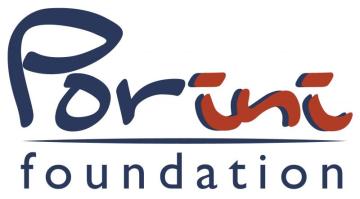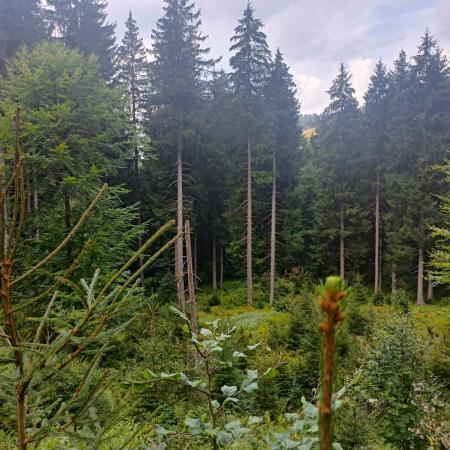

Les actions en faveur de la biodiversité peuvent créer des puits de carbone et ouvrir la voie à la commercialisation de ces certificats de CO2. Dans cette étude pilote de Tech4Nature, nous avons calculé la quantité de CO2 séquestrée par les activités de gestion du grand tétras (une espèce d'oiseau menacée en Suisse) dans la réserve forestière de Schwägalp - Bruggerwald.
L'objectif de cette étude pilote est de tester les hypothèses formulées dans la nouvelle Norme de la Liste verte pour le carbone (GLS+). Le GLS+ est une norme indépendante, mais 60 % des indicateurs sont basés sur la norme existante de la Liste verte de l'UICN pour les aires protégées et conservées afin d'obtenir des résultats efficaces, équitables et fructueux en matière de conservation.
Le projet pilote Tech4Nature s'appuie sur des données réelles générées par une intervention en faveur de la biodiversité en 2021 pour favoriser le grand tétras occidental (Tetrao urogallus), une espèce menacée localement, mais il ne fait que tester le potentiel des certificats de CO2 sans les créer.
Contexte
Défis à relever
- Conservation du grand tétras: création d'un habitat approprié pour la conservation du grand tétras, une espèce d'oiseau menacée au niveau local. Il s'agit de
- L'amélioration de la biodiversité par l'extraction durable du bois: Ouvrir la forêt dense pour créer un écosystème approprié pour le grand tétras et améliorer la biodiversité globale au sein de la réserve tout en profitant au forestier en utilisant le bois extrait dans des structures à long terme. Ainsi, le CO2 est fixé dans le temps, ce qui est nécessaire pour la création de certificats de CO2.
- Éviter l'exploitation forestière et la conversion des terres: La zone doit répondre à l'exigence supplémentaire de ne pas avoir été précédemment exploitée pour générer des crédits carbone ou avoir subi une conversion de son état forestier d'origine.
- Séquestration du CO2 et estimation de la base de référence: Calculer avec précision la séquestration du CO2 en établissant une base de référence sans aucune intervention et en identifiant l'écart entre cette base de référence et les résultats escomptés grâce aux mesures mises en œuvre.
Emplacement
Traiter
Résumé du processus
Pour pouvoir émettre des certificats de CO2 pour un projet donné, tous les éléments constitutifs doivent être réunis.
Blocs de construction
Additionnalité
Dans les projets de compensation carbone, l'additionnalité est cruciale pour déterminer la qualité des crédits de compensation carbone. Un projet est dit "additionnel" si les réductions de gaz à effet de serre (GES) qui lui sont associées n'auraient pas eu lieu sans l'intervention spécifique, ce qui garantit la crédibilité et l'efficacité des crédits carbone délivrés.
Facteurs favorables
L'additionnalité est respectée si la réduction n'aurait pas été réalisée sans la contribution financière des certificats de CO2 délivrés.
Leçon apprise
Étant donné que la coupe a déjà été effectuée et que le calcul a été fait rétrospectivement, cette condition n'a pas été respectée dans le projet pilote examiné. Mais si la coupe est effectuée pour des raisons de biodiversité et que les certificats de CO2 qui en résultent sont utilisés pour financer la coupe ou augmenter la surface gérée, alors cette condition serait respectée.
Éviter le double comptage
Le double comptage dans les projets carbone fait référence à une situation où un crédit carbone est revendiqué par plus d'une entité, sans produire aucun avantage supplémentaire en termes de carbone. Le double comptage nuit à l'intégrité des programmes de compensation carbone et à la lutte contre le changement climatique, car il fausse les réductions ou les suppressions réelles d'émissions réalisées. Il dilue essentiellement la valeur et l'efficacité des crédits carbone.
Facteurs favorables
Le double comptage peut être évité si tous les travaux sont effectués par une seule entité et annoncés selon une méthode standard comme la méthodologie GLS+ testée dans ce projet pilote.
Leçon apprise
Dans le contexte actuel d'une entité et d'une forêt spécifique, où aucune mesure autre que des mesures de biodiversité ne peut être légalement entreprise, le double comptage n'était pas une préoccupation majeure.
Séquestration à long terme
La séquestration à long terme est la pratique qui consiste à capturer, sécuriser et stocker les gaz à effet de serre (GES) ou d'autres formes de carbone de l'atmosphère pendant une longue période, idéalement indéfiniment.
L'objectif de la séquestration à long terme est d'atténuer les effets du changement climatique en réduisant les niveaux de CO2 et d'autres gaz à effet de serre dans l'atmosphère.
Facteurs favorables
Il est important que les méthodes utilisées soient durables et sûres afin de garantir que le carbone ne retourne pas dans l'atmosphère. Dans ce projet pilote, nous avons atteint cet objectif en utilisant le bois à des fins de construction dans la zone proche de la réserve forestière.
Leçon apprise
La séquestration à long terme est essentielle pour stabiliser les niveaux de carbone à l'échelle mondiale et est considérée comme une composante cruciale des efforts de lutte contre le changement climatique, mais l'identification et la sécurisation du stockage à long terme du CO2 dans les sites de construction est une tâche de grande envergure et un exercice coûteux.
Base de référence
Le niveau de référence fait référence à la projection des émissions de gaz à effet de serre (GES) qui se produiraient dans une zone de projet spécifique si aucune intervention ou modification des pratiques actuelles n'était mise en œuvre. Il sert de point de comparaison pour évaluer l'efficacité du projet carbone en matière de réduction des émissions.
Facteurs favorables
La base de référence est essentielle pour calculer les réductions réelles de carbone attribuables au projet Grand Tétras et pour mesurer l'impact du projet sur l'atténuation du changement climatique.
Leçon apprise
La ligne de base sert de référence pour l'évaluation des résultats du projet en matière de réduction des émissions de carbone et est donc très importante pour l'émission de certificats de CO2. La prévision du développement d'une zone donnée sur de longues périodes est particulièrement exigeante et joue un rôle crucial sur le montant des certificats de CO2 délivrés. L'objectif de protection à long terme dans les zones protégées et conservées est donc un avantage important pour la séquestration à long terme d'équivalents CO2.
Impacts
60 % des exigences du Green List Standard (GLS) sont également nécessaires pour le GLS+ Standard testé. Le lancement du processus GLS+ pour le carbone pourrait donc mener à la certification GLS et vice versa.
Le réseau GLS+ ajoute la possibilité de créer des crédits carbone de haute qualité et les nouveaux fonds générés peuvent être utilisés pour aider à financer les aires protégées et conservées afin d'améliorer leur gouvernance et leurs performances de gestion et de faciliter leur parcours vers la certification de la Liste verte de l'UICN.
La quantité séquestrée estimée à 42,08 (tC/ha) et la valeur représentée d'environ 1'000 USD/ ha, ne couvre pas le déficit/ ha pour l'intervention dans notre projet pilote suisse, mais le financement supplémentaire permettra l'extension de la zone traitée en faveur du Grand Tétras.
Ce modèle pourrait être intéressant à mettre en œuvre dans d'autres parties du monde, où les coûts de gestion sont moins élevés et où ce flux supplémentaire pourrait aider à combler les déficits de financement existants.
La zone gérée a été améliorée pour le grand tétras et, en même temps, une partie des coûts peut être couverte par le processus GLS+ générant des certificats de CO2.
Bénéficiaires
- La réserve forestière
- Les forestiers
- Les espèces clés
- Communauté d'Urnäch
- Investisseurs potentiels
Objectifs de développement durable
Histoire

Les forêts gérées en Suisse sont devenues trop matures, car l'exploitation et la gestion de ces zones nécessitent d'importants efforts financiers. En conséquence, de nombreuses forêts sont devenues denses et trop sombres pour servir d'habitat à des espèces typiques comme le grand tétras occidental (Tetrao urogallus), qui est devenu une espèce rare dans les Alpes suisses. L'ouverture des forêts améliore rapidement l'habitat de ces espèces, mais l'exploitation forestière dans ces conditions difficiles est un exercice coûteux. Afin d'augmenter la surface gérée en faveur du grand tétras, nous avons examiné les possibilités et les conditions à remplir pour cofinancer une telle intervention sur l'habitat par le biais de certificats de CO2.
Dans le cadre de l'initiative Tech4Nature, un accord de partenariat entre Huawei et l'UICN, nous avons examiné une ancienne coupe de 2021, pour laquelle toutes les informations sont désormais disponibles, afin d'estimer les équivalents CO2 attendus pour une nouvelle coupe. En respectant les conditions nécessaires telles que l'additionnalité, le double comptage, la séquestration à long terme et la ligne de base "business as usual", nous avons pu démontrer que les mesures de biodiversité génèrent des certificats de CO2 qui peuvent être vendus sur le marché volontaire du carbone. Nous avons utilisé différents modèles, des images satellite ainsi que Lidar et GIS pour calculer différents scénarios et avons estimé un équivalent moyen de 42 tonnes de CO2 par hectare séquestrées grâce à l'ouverture des forêts. Cela représente environ 1000 USD par hectare, ce qui constitue une contribution importante à la réduction des coûts des mesures en faveur de la biodiversité dans ces zones montagneuses escarpées.

